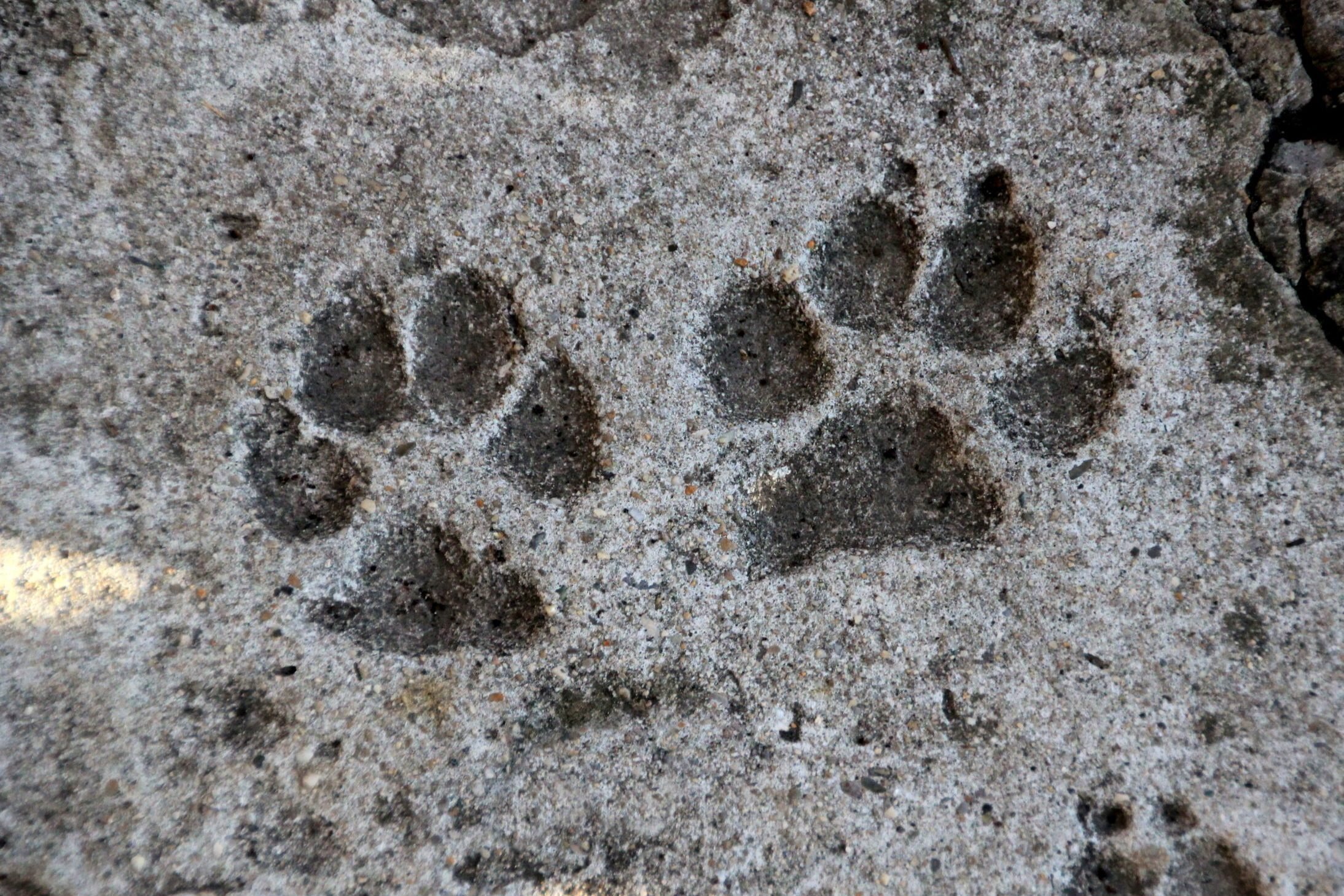
Once upon a time, tiny South American dogs were considered spiritual. Woolly dogs supplied hair for spinning. And short-legged dogs ran in giant hamster wheels to turn spits. All played a key role in human progress—and all are now extinct dog breeds.
Dogs have been domesticated for at least 15,000 years. They became a part of human culture that helped us survive, migrate and flourish. They watched our camps, caught our food, guarded our livestock, fought our wars, rid our pantries of vermin, herded our animals, warmed our beds and filled our hearts. From Arctic working dogs to Greek lapdogs, many of these formerly popular dog breeds didn’t survive through the present day, but they still made a huge impact on society.
“It’s important to know about these extinct dogs if we care anything about our shared human history,” says Audrey Lin, an evolutionary molecular biologist at the American Museum of Natural History. “Dogs were the very first [animals] that humans domesticated. They went with humans when we dispersed to the rest of the world. We’ve shaped dogs for more diverse roles than any other animal, and the types of dogs that we created are a reflection of us.”
Why have certain breeds gone extinct?
Sometimes they become unemployed, replaced by technology or other breeds. War is a common reason, either because of food shortages or deliberate killing of the dogs owned by the conquered side. Some breeds die out because of interbreeding with new breeds. And some simply fade away, or just change, sometimes leaving descendant breeds, such as the saluki, Tibetan spaniel, basenji and Siberian husky. “Most dog breeds today don’t look exactly like what their ancestors looked like,” explains Lin. “For example, the spitz dogs from Pomerania in the 18th century were considerably larger than the Pomeranians of today.”
Ahead, you’ll learn about a few of the breeds we’ve lost—the “dodo birds” of the dog world—roughly arranged according to their time of extinction. Find out what happened to them, along with which dogs are on the verge of extinction today.
Get Reader’s Digest’s Read Up newsletter for more pets, cleaning, humor, travel, tech and fun facts all week long.
About the experts
|
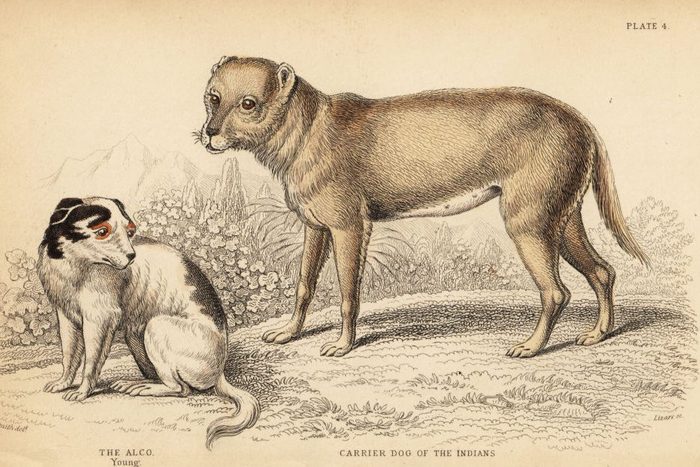
Techichi
This extinct dog is the most ancient on our list. The toy-sized tyke was bred by the Toltecs as early as the 9th century, and later by the Aztecs. Both civilizations thought the Techichi had mystical powers, able to cure disease and lead the dead through the underworld. Unfortunately, that didn’t help these dogs when it came to mealtime, as they were also a favorite main course for special feasts. The Spanish joined right in when they arrived in the 16th century, eating as many as 100,000 of the bite-sized pups. As the Aztecs were conquered, the dogs were left to roam, and they subsequently died or interbred with the Spanish dogs. But some people believe pockets of them survived in the mountains and are the ancestors of today’s Chihuahuas.
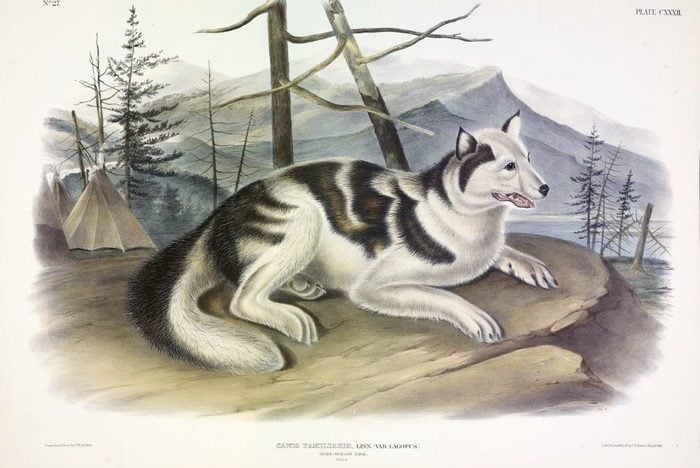
Hare Indian dog
Hare Indian dogs were first reported by explorers who found them among various Native American tribes in what is now northwestern Canada. They were believed to be descended from Viking dogs and possibly mixed with North American coyotes—although at least one expert who studied them while they were still around thought they were domesticated coyotes. These small, super fast dogs caught game for their people but fell into decline when guns took over the hunting duties. The remaining dogs interbred with European breeds, and although some people think a modified version of this breed still exists, most believe it was extinct by the mid-1800s.
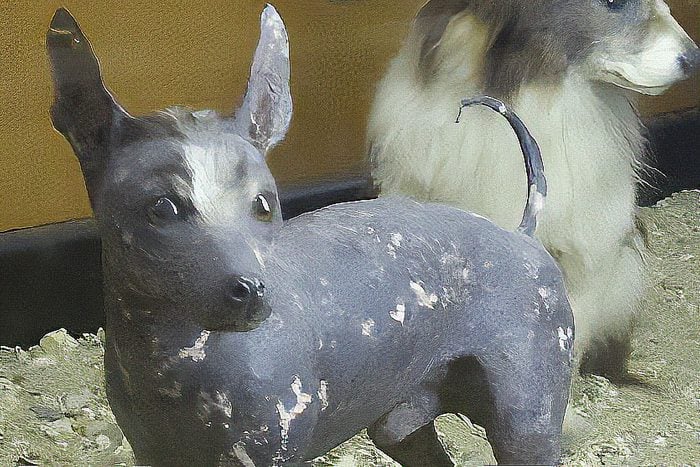
African hairless dog
Also known by the much cooler name of Abyssinian sand terrier, this breed’s lack of hair was caused by the same gene mutation found in hairless breeds from Asia and South America. It’s likely the original hairless breed was the African hairless, which was then dispersed throughout the world on trading ships. These dogs were considered so odd that they were exhibited at the London Zoo in the mid-1800s. The last known specimen died in 1903 and is now stuffed and on display at the Natural History Museum at Tring in England. Could there still be some deep in the jungles or savannas of the vast African continent? Possibly. Anyone up for a safari?
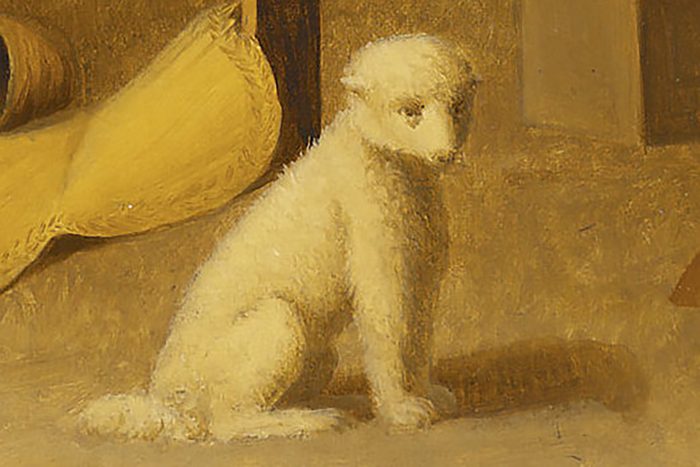
Salish wool dog
Like the woolly mammoth, the Salish woolly dog (as it’s also called) is one of the better-known extinct animals. These thick-coated dogs were bred by the coastal Salish people of what is now Washington state and British Columbia, possibly for thousands of years. Salish wool dogs were sheared like sheep and their hair was prized as wool, spun into yarn and used to make all sorts of textiles. But when European sheep moved in along with the settlers in the mid-1800s, the need for dog wool declined. Some dogs may have been kept as companions after that, but there was no real reason to keep large numbers of them, and the breed became extinct around 1940.
Hides with genetic material still exist—one came from a dog named Mutton 160 years ago—and studies of their DNA show that this breed existed for nearly 5,000 years before it died out, making its loss one of the greatest of any dog breed.
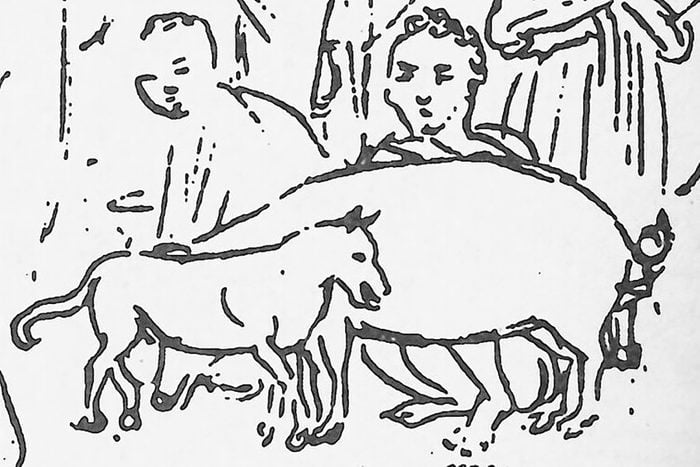
Hawaiian poi dog
This unassuming little dog is classified as a pariah dog, a class of dogs that hung around primitive villages and tribes. Pot-bellied and short-legged, poi dogs were considered dimwitted and sluggish. They were called poi after the food made from roots that they were fed—and for a dark reason: Villagers fattened them up and ate them! These dogs were also considered to be lucky charms, likely because upon a child’s birth, a poi puppy would be given to the child and raised alongside it. The puppy was supposed to be the child’s playmate and guardian, and even when the dog eventually died, its teeth were given to the child to wear so the dog protected him even after death.
As Europeans moved in during the late 1700s, eating dogs went out of style. Once the poi were no longer cultivated as a food source, they weren’t tended to at all. They roamed the area and interbred with European dogs, and by the early 1900s, at the latest, they were extinct. An attempt was made in the 1960s to recreate them based on their appearance, but it was abandoned.
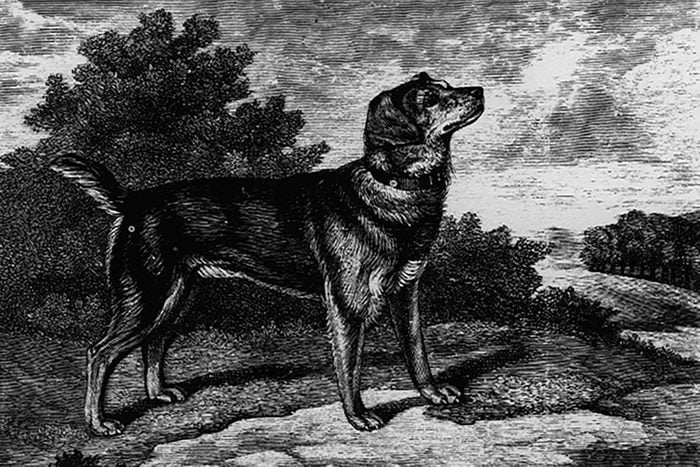
Black and tan terrier
This dog’s epitaph might read: “Gone but not forgotten.” Because even though the black and tan terrier is now extinct, it lives on through several current breeds. This two-toned breed was one of the earliest-named terrier breeds (even though the name admittedly wasn’t all that imaginative), and it was common throughout Britain by the 1600s, in wide demand as a hunter of rats and vermin. That said, maybe it was too successful—it was crossed with a number of other breeds to start up new ones, like the Manchester terrier, Welsh terrier, Scottish terrier and Fell terrier, and along the way, it was abandoned in favor of the newcomers that took its place. In the late 1800s, the Kennel Club briefly included it in its listings in England, but it was dropped due to lack of interest. By 1900, it was officially gone.
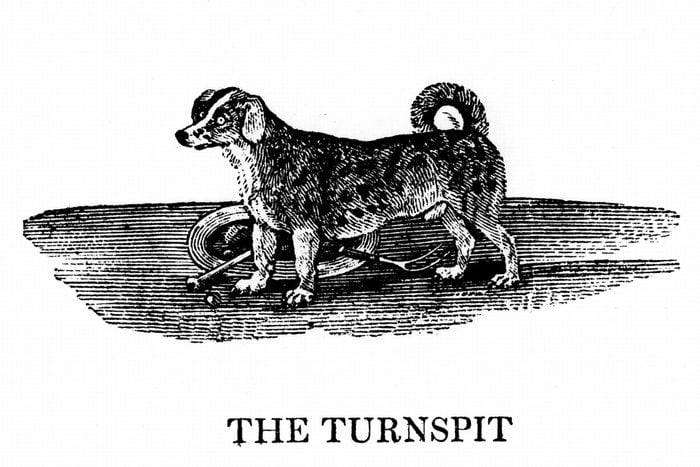
Turnspit dog
Life as a turnspit dog was hard. Larger kitchens had giant hamster wheel–like structures into which a dog was placed to run. The running dog (sometimes encouraged by hot coals thrown in the bottom of the wheel) would move the wheel, which would turn meat on a spit over a fire. These dogs, which had short, crooked legs, were common in the 1700s in both Europe and America, but by 1850, they had largely been replaced in more affluent homes by mechanical turnspits. By 1900, this breed disappeared, with only a single specimen, a stuffed dog named Whiskey, remaining—finally standing still in the Abergavenny Museum.
We’re not sad that the turnspit dog lost its difficult job, but we are sad that we lost the turnspit dog. Some people believe the Welsh corgi or the Glenn of Imaal terrier descend from these dogs. It would be nice if their descendants did, indeed, end up as those royal dogs!
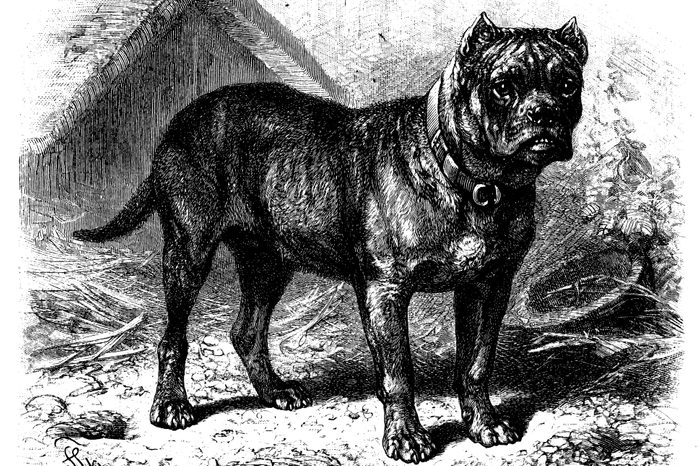
Bullenbeisser
Like the black and tan terrier, the bullenbeisser was dethroned by its own descendants. (Bunch of ingrates!) The former king of the bull-baiting ring, the bullenbeisser—whose name means “bull biter”—was Germany’s answer to the bulldog in the 1600s through 1800s. But of course, when something’s that popular, everyone tries to get a piece of it, and so various other breeds, especially other bulldog breeds, were crossed with it. As a result, the bullenbeisser is behind most of the modern bully breeds, along with the boxer. But it gave too much of itself, and by the early 1900s, the bullenbeisser was gone, a victim of crossbreeding.
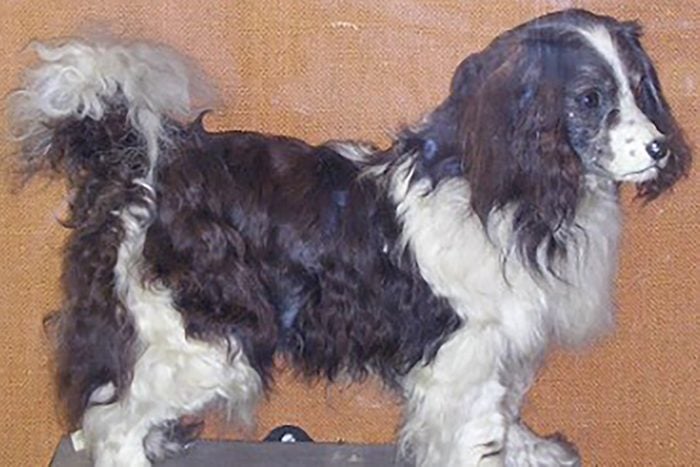
Toy trawler spaniel
One of the few extinct toy breeds, the toy trawler was once a full-sized spaniel. Thought to be derived from the larger Sussex spaniel and the smaller King Charles spaniel, it was subsequently used to create the Cavalier King Charles spaniel, which was once the King Charles spaniel. Clear? Yeah, well, maybe that’s why it went extinct: Nobody could keep up! Actually, no one seems to know why it went extinct, but by 1920, this breed was mostly gone. If you want to see one in the flesh (or at least in the hide), you can go the Natural History Museum at Tring in England and check out Robin, the only known specimen, whose taxidermied body now stands as a silent memorial.
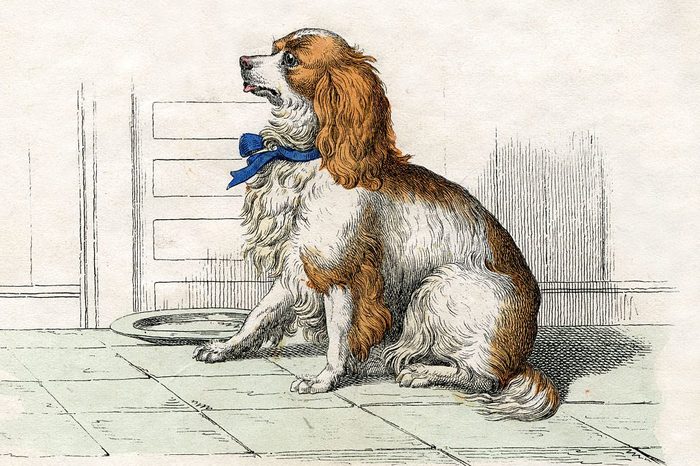
English water spaniel
How does an ancient breed just disappear? The water spaniel was mentioned by none other Shakespeare in The Two Gentlemen of Verona in the late 16th century and described as a breed as early as 1802. A popular dog for duck hunting, it sported long, tightly curled hair, and its body was white and liver-spotted; it looked somewhat like a curly-coated springer spaniel, and in fact, it’s probably behind some modern curly-haired breeds such as the American water spaniel and curly coated retriever.
Nobody knows exactly why the English water spaniel just slowly went away. By the late 1800s, some thought they were already lost, while others thought a few remained and encouraged breeding them. It didn’t work, and by 1930, everyone agreed the breed was extinct.
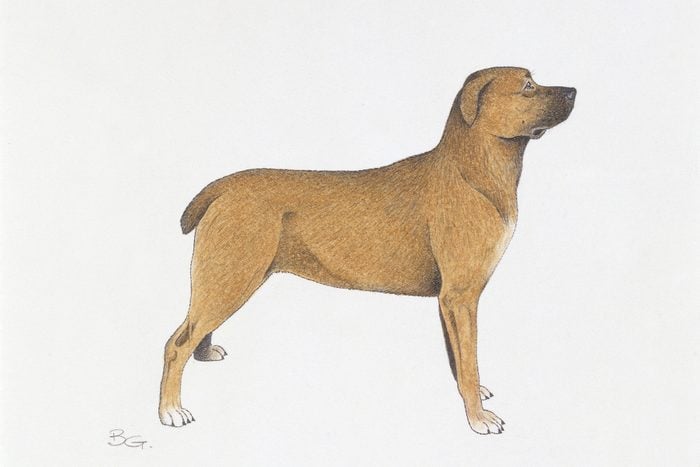
Belgian mastiff
Do you like mysteries? The Belgian mastiff is on the Federation Cynologique Internacionale’s “suspended” list due to lack of any being registered in years. Still, other canine registries hold out hope that a few may still remain. But where? They were once seen throughout the Netherlands and Belgium, pulling carts that delivered milk and food, but cart dogs eventually fell from favor. And when the two world wars struck, there was little extra food to share with such big dogs, which weighed about 100 pounds. A few may have survived World War II, but if so, they seem to have faded into obscurity, and most dog fanciers believe they were extinct by 1950.
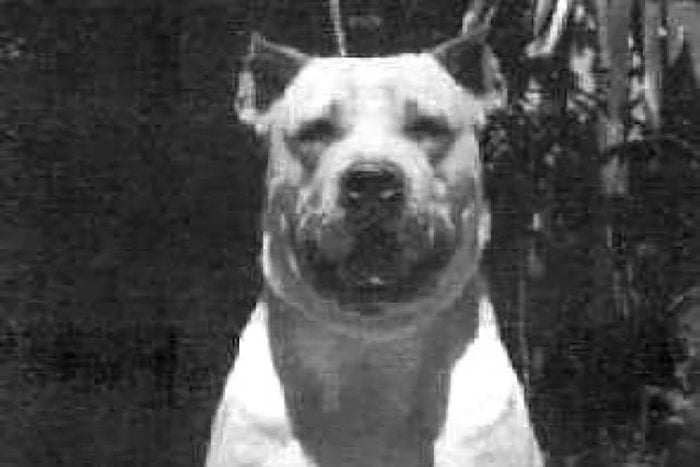
Cordoba fighting dog
Being the toughest dog on the block wasn’t enough to save the Cordoba fighting dog from extinction—in fact, it probably hurried it along. Described as large, white and ferocious, these dogs were created in the 1800s by crossing smaller fighting dogs with large European mastiff–type dogs, creating the ultimate canine fighting machines. They would fight anything, including each other, to the death (and even during mating, which probably didn’t help in the extinction department), but what really did them in was Argentina’s prohibition against dog fighting in 1954. There weren’t that many around anyway, and with their reason for being (dog fighting) now gone, these dogs faded away. They did leave one noteworthy descendant, however: the Dogo Argentino.
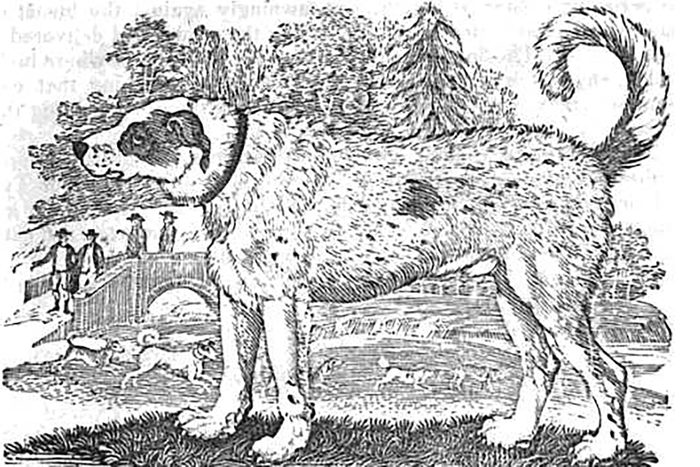
St. John’s water dog
This breed is probably more famous now for its descendants than it was when it was around. It spawned the Newfoundland, Labrador retriever, Golden retriever—in fact, all the modern retrievers! How’s that for a fascinating dog fact? St. John’s water dogs were bred in Newfoundland as early as 1790 and helped fishermen haul lines from boat to boat, retrieve floating items and pull in nets full of fish. Why on earth would such a great dog go extinct? Dog laws. First, in the mid-1800s, Newfoundland placed heavy taxes and restrictions on dogs, as they were seen to threaten the burgeoning sheep industry. Second, it became hard to take dogs to Britain because of new laws requiring long quarantines. In the end, people decided it wasn’t worth keeping them just to haul nets, so their numbers dwindled. A last-minute effort to save the breed in the 20th century was unsuccessful, and the last two died in the 1980s. The lesson? Restrictive dog laws can have unintended consequences.
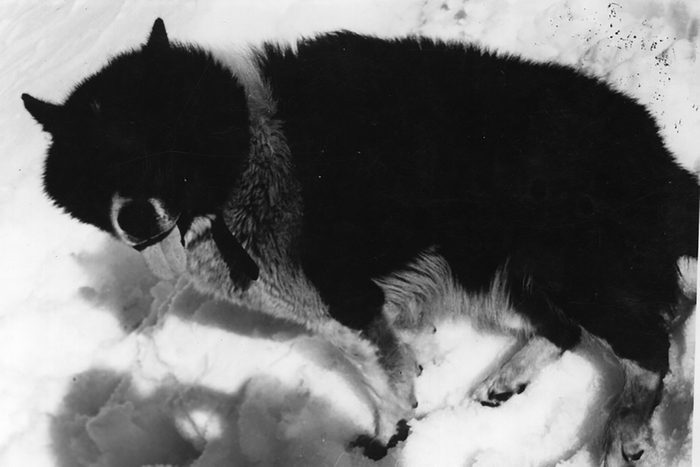
Argentine polar dog
Gone in just 60 years, the Argentine polar dog may be one of the most short-lived breeds in history—and it’s too bad, because it was great at its job, as well as friendly, protective and handsome. It was purposefully created in the mid-1900s by crossing various sled dogs and cold-weather breeds to develop a supreme sled dog to lead Argentinian Army expeditions around the South Pole. Mission accomplished! They created a super-strong, cold-hardy dog that made further Antarctic exploration possible. But after all these dogs did, they (along with all dogs) were banned from Antarctica in 1994 because they could threaten native fauna. After returning to Argentina with no job and no job prospects, the breed was no longer a priority, and the last one died around 2000.
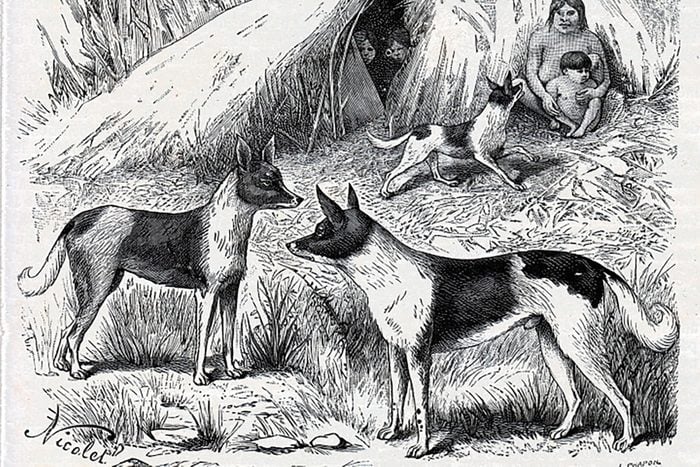
Fuegian dog
The story of the Fuegian dog is a bit different than most of our other extinct dog breeds—and it’s one of the most tragic. Also called the Yahgan dog or Patagonian dog, it’s the only one on our list not from the same wolf lineage as our other domestic dogs. Instead, it seems more closely related to South American foxes, especially the culpeo.
Owned by the Yahgan people of the southern cone of South America (the southernmost indigenous people in the world), these dogs may have been useful for hunting otters, but their main job appeared to be keeping their humans warm by sleeping close to them—in fact, a number of these dogs would wrap around a single person for this very purpose. Sometime in the 1880s, the dogs were accused of being ferocious because some had allegedly attacked goats, though this claim actually may have been part of a plan to rid the region of them. Regardless of the reason, a bounty was put out on Fuegian dogs, and a mass extermination resulted in their extinction by 1919.
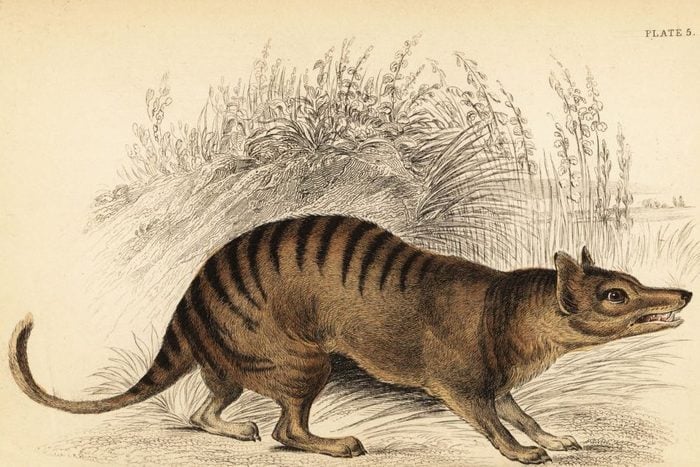
Tasmanian wolf (Thylacine)
OK, so this one’s not actually a dog. But in my opinion, it’s like an honorary dog. While its real name is thylacine, it’s also called the Tasmanian tiger or Tasmanian wolf. But it was actually neither—it was a marsupial! Like a wolf, though, it was a large, carnivorous apex predator, and Tasmania’s government put a bounty on it in the 1880s because the animals were killing the livestock European settlers had brought with them. Bounty hunters did too good of a job, and the last known thylacine was believed to have died in a zoo in 1936.
But the thylacine may not be gone. Many people claim to have sighted them in the wild, but like with Bigfoot sightings, there’s no really convincing evidence. That said, one company plans to use the DNA from preserved specimens to clone them and bring them back to life!
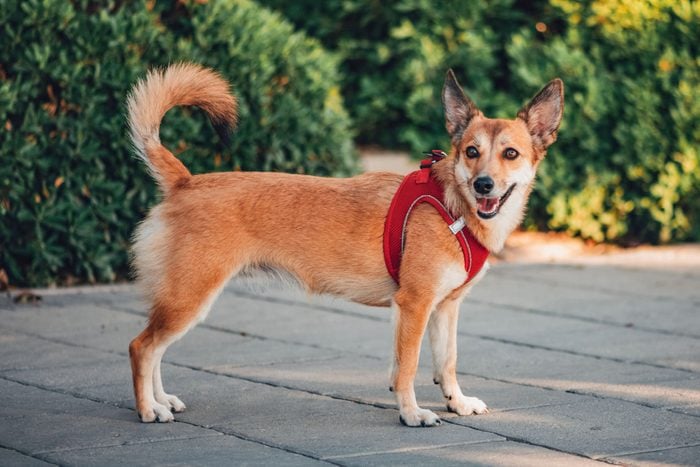
Which dog breeds are currently on the verge of extinction?
The Norwegian Lundehund is one dog on the tipping point. This unique and flexible breed has extra toes on each foot that aided it in climbing into seaside cliff tunnels to hunt puffins. The lundehund has faced near-extinction several times, partly due to job loss (turns out puffin hunting is not much in demand these days—in fact, it’s illegal) and partly due to repeated distemper outbreaks on its home island. The current breed descends from just four individuals, and about a third of all Lundehunds suffer from a hereditary digestive problem.
Scientists and breeders are working together to arrange careful crosses with other breeds in an effort to rescue the Lundehund, according to Cindy Stansell, an AKC-certified judge and the spokesperson for Norwegian Lundehund Association of America. “Additionally, the Norwegian Kennel Club is conducting a controlled cross-breeding program with other spitz breeds to increase diversity and immunity in the Norwegian Lundehund,” she explains. It’s a plan that’s worked before with other endangered breeds, such as the Irish wolfhound in the late 1800s, but this time it has the advantage of DNA testing and other modern science.
The Dandie Dinmont is another rare breed whose numbers were dwindling until the Kennel Club in Britain named it as one of its most vulnerable native breeds. Then, breeders banded together to promote the Dandie, posting cute pictures, taking their dogs out to meet the public, attending dog events and encouraging people to try this short-legged breed with the tousled hair and big eyes—and slowly but surely, the Dandie, like the phoenix, seems to be rising from the ashes.
Can we save today’s endangered dog breeds?
It’s definitely possible. Many of today’s breeds have been rescued from the brink of extinction—some due to dedicated people who gathered them from remote locations, shared their meager rations when food was scarce or devoted their lives to reviving an endangered breed. In some cases, careful crosses with similar breeds enabled breeders to resurrect a breed that was lost or nearly lost.
You can do your part the next time you’re choosing a breed as your future family member by considering one of the endangered rare breeds at the bottom of the popularity list. In Britain, the Kennel Club keeps a list of vulnerable native breeds and asks potential dog owners to consider them before jumping to the more popular ones. It follows the efforts undertaken by the Rare Breeds Survival Trust, an organization that strives to preserve endangered breeds of livestock and horses but does not include dogs.
Why trust us
At Reader’s Digest, we’re committed to producing high-quality content by writers with expertise and experience in their field in consultation with relevant, qualified experts. For this piece on extinct dog breeds, Caroline Coile, PhD, tapped her experience as an award-winning journalist specializing in canine breeds, health and science, and interviewed other experts in the field. We verify all facts and data, back them with credible sourcing and revisit them over time to ensure they remain accurate and up to date. Read more about our team, our contributors and our editorial policies.
Sources:
- Audrey Lin, DPhil, evolutionary biologist and Gerstner Postdoctoral Scholar in Bioinformatics and Computational Biology at the American Museum of Natural History; email interview, March 10, 2024
- Cindy Stansell, spokesperson for the Norwegian Lundehund Association of America, a longtime breeder of champion dogs and an AKC-licensed judge; email interview, March 20, 2024
- PLoS One: “Genetic rescue of an endangered domestic animal through outcrossing with closely related breeds: A case study of the Norwegian Lundehund”
- Rare Breeds Survival Trust
